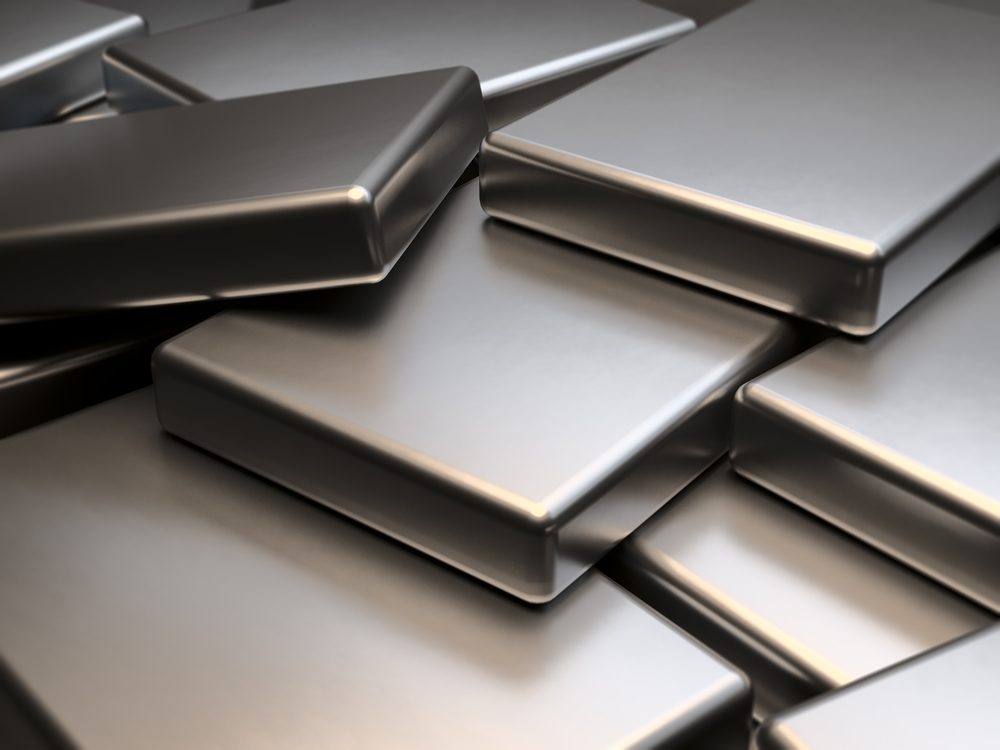We investigate the geopolitical and economic implications of rare-earth elements.

In the latest Double Take podcast, we turned our investigative lens toward the global gold rush for rare-earth elements, the raw materials essential to a myriad of consumer electronics we rely on every day—smartphones, televisions, cameras, LED lights, computer monitors and hard drives, to name a few. Perhaps most importantly in today’s economic landscape, rare earths are also key components in the production of carbon-neutral technology, including electric-vehicle (EV) motors and wind turbines. As rare earths are vital to the global energy transition, and as China has tactically built up a monopoly in the area over the last few decades, these elements are currently at the epicentre of geopolitical tensions between China and the West.
Standard iron magnets were originally used in EV production, but they ultimately fell out of favour in the EV industry, as their immense weight dragged on range and horsepower potential. In response to consumer demand for longer-range vehicles, EV manufacturers switched from standard iron magnets to rare-earth magnets, which are nearly 35 times more powerful. Rare-earth magnets are typically comprised of a combination of three fundamental elements—neodymium, iron and boron. For use in EVs, these rare-earth magnets must undergo a separate doping process to preserve their magnetic properties at elevated temperatures. This doping process requires access to heavy rare earths including terbium, dysprosium and, in some cases, holmium.
There are two general sources of rare-earth elements: ionic clays and phosphate minerals. The first option is currently barred by most Western nations, as the process of mining ionic clays involves dousing landscapes with mild acids to recover relatively small quantities of rare earths. Phosphate minerals provide another potential source—with a caveat. While phosphate minerals are readily available and tend to contain heavy rare-earth elements, they can also contain thorium, a metal with mild, naturally occurring radioactive properties.
Back in the 1980s, when efforts were set on neutralising the nuclear arms race, former US President Ronald Reagan and former Soviet President Mikhail Gorbachev developed much of the nuclear policy that still governs today’s world order. During this time, the US Nuclear Regulatory Commission (NRC) and the International Atomic Energy Agency (IAEA) classified the world’s phosphate-based heavy rare earths as nuclear source material. To better understand the state of play of rare earths today, we spoke to James Kennedy, president of ThREE Consulting, which is a boutique firm that provides technical, financial and strategic advisory services on rare earths to the US government and key industrial players. According to Kennedy, fully comprehending today’s market dynamics requires a brief refresher on Cold War nuclear policy.
Now, nobody in their right mind wants to own, and stack up and store, nuclear source material, especially if there’s no market for it, because then it becomes nuclear waste. So, what happens? The entire world quit mining and/or processing these phosphate-based materials to avoid the thorium liability. And so, all heavy rare earths in the entire Western world, the flow was shut off. Now, who’s not affected by any of this? China. So China essentially, from 1980 on, was able to pick up on this, and that’s exactly when their rare-earth markets took off.
James Kennedy, president at ThREE Consulting
US companies at this time began transferring their rare-earths manufacturing capabilities, along with their processing and separation technology, to China to unload their thorium liability. Companies in Japan and France quickly followed suit, shutting the doors on their once fully functioning rare-earths operations.
So all of that stuff…operating there since 1980. And all of these other enterprises essentially became empty office buildings. And the employees either have long been retired or are no longer with us. So, you don’t have an adequate number of living, breathing human beings that know this black art, and separating rare earths is black art. That’s probably the most challenging part.
James Kennedy
Since then, China has invested heavily in the downstream side of processing and separating metals and making magnets, building up a nearly impenetrable monopoly in the space. Today, given the lack of necessary infrastructure and heavy technical expertise in the West, any players attempting to enter the rare-earths industry are left with no choice but to sell their material to China for processing.
We spoke to Bob Galyen, former chief technology officer at Contemporary Amperex Technology Co., Limited (CATL), for his take on potential solutions for overcoming this geopolitical hurdle in the EV industry. His former employer CATL is a Chinese battery giant that grew to become one of the largest lithium-ion battery suppliers for EVs in the world. According to Galyen, in the absence of rare-earth elements, electric motors could still run, albeit less efficiently.
..a lot of the AC (electric) motors that you go out and find in the industry today work perfectly fine without permanent (rare-earth) magnets. It’s just that they tend to be bigger and bulkier than permanent magnet motors. That’s the whole novelty of the permanent magnets is you can make the machines smaller, and you get really good output with them. So, in the absence of permanent magnet materials, you can make motors, they’re just not as efficient and they’re bigger, bulkier, both gravimetrically and volumetrically inefficient compared to permanent magnets.
Bob Galyen, former chief technology officer at CATL
If rare earths were to disappear tomorrow, Galyen expressed his faith in science to improve any inefficiencies that might arise from discontinuing the use of rare-earth magnets in EVs. In his view, with the technologies that exist today, including artificial intelligence and mathematical modelling, a plethora of new solutions are likely to crop up. Nonetheless, Galyen also sees potential in new rare-earth mining operations currently in consideration, including the development of eco-friendly, underwater deep-sea mining vessels.
There are companies out there developing technologies that use artificial intelligence with a vision system that looks at the nodules that lay at the ocean bed floor and determines whether or not there’s a life form on that nodule. If there’s a form of life that is known, and it is programmed into the artificial intelligence, the robot will not pick up that nodule. But if the nodule does not have life form, it uses approximately a six-foot-long tripod type of pincher fingers to pick up the nodules and put it in the basket to be surfaced and then processed later…those nodules not only contain copper, cobalt, nickel, manganese, but also some rare-earth percentages. Albeit low percentages, those low percentages, when concentrated, can turn into a pretty significant amount of rare earths in the future.
Bob Galyen
Gaylen explains that a nodule, which is typically between the size of a tennis ball and a softball, forms around an inert material (e.g., a sand particle or piece of a shell) over hundreds of thousands of years. While this technology is still in an early stage of development and would be likely to face several environmental and regulatory obstacles, Galyen is optimistic that it could provide a cost-effective and environmentally conscious solution for establishing a dependable rare-earth supply chain.
In the meantime, we look to the horizon, and to the sea beneath the horizon, for the future sourcing of materials for electrification across the economy.
Subscribe to Double Take on your podcast app of choice or view the Plumbing the depths for rare earths and Rare earths: The geopolitical state of play episode pages to listen in your browser.
This is a financial promotion. These opinions should not be construed as investment or other advice and are subject to change. This material is for information purposes only. This material is for professional investors only. Any reference to a specific security, country or sector should not be construed as a recommendation to buy or sell investments in those securities, countries or sectors. Please note that holdings and positioning are subject to change without notice. This article was written by members of the NIMNA investment team. ‘Newton’ and/or ‘Newton Investment Management’ is a corporate brand which refers to the following group of affiliated companies: Newton Investment Management Limited (NIM), Newton Investment Management North America LLC (NIMNA) and Newton Investment Management Japan Limited (NIMJ). NIMNA was established in 2021 and is comprised of the equity and multi-asset teams from an affiliate, Mellon Investments Corporation. NIMJ was established in March 2023 and is comprised of the Japanese equity management division of an affiliate, BNY Mellon Investment Management Japan Limited.
Important information
This material is for Australian wholesale clients only and is not intended for distribution to, nor should it be relied upon by, retail clients. This information has not been prepared to take into account the investment objectives, financial objectives or particular needs of any particular person. Before making an investment decision you should carefully consider, with or without the assistance of a financial adviser, whether such an investment strategy is appropriate in light of your particular investment needs, objectives and financial circumstances.
Newton Investment Management Limited is exempt from the requirement to hold an Australian financial services licence in respect of the financial services it provides to wholesale clients in Australia and is authorised and regulated by the Financial Conduct Authority of the UK under UK laws, which differ from Australian laws.
Newton Investment Management Limited (Newton) is authorised and regulated in the UK by the Financial Conduct Authority (FCA), 12 Endeavour Square, London, E20 1JN. Newton is providing financial services to wholesale clients in Australia in reliance on ASIC Corporations (Repeal and Transitional) Instrument 2016/396, a copy of which is on the website of the Australian Securities and Investments Commission, www.asic.gov.au. The instrument exempts entities that are authorised and regulated in the UK by the FCA, such as Newton, from the need to hold an Australian financial services license under the Corporations Act 2001 for certain financial services provided to Australian wholesale clients on certain conditions. Financial services provided by Newton are regulated by the FCA under the laws and regulatory requirements of the United Kingdom, which are different to the laws applying in Australia.





